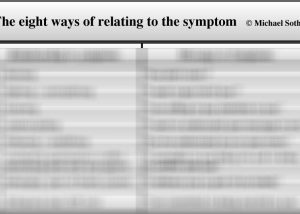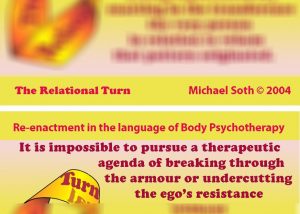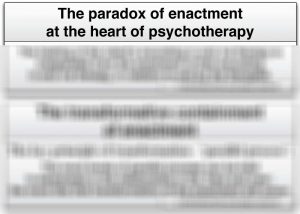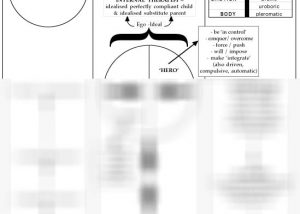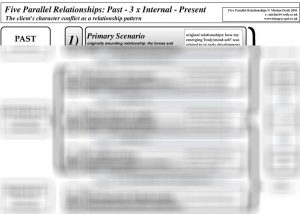This is the simplified version of a handout prepared for a presentation at a conference for therapists working in primary care, who were interested in bringing an embodied perspective to their patients. Later this became the basis for a regular CPD workshop I was running on 'working with [...]
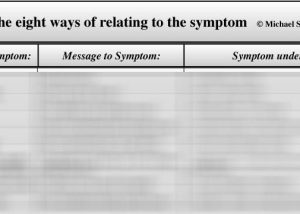
The 8 Kinds of Relationship to the Symptom (2005)
Michael - Handouts2017-04-07T03:01:34+00:00This handout was prepared for a presentation at a conference for therapists working in primary care, who were interested in bringing an embodied perspective to their patients. Later this became the basis for a regular CPD workshop I was running on 'working with illness and psychosomatic symptoms'. The [...]
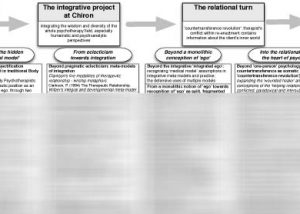
The Development of the Chiron Approach – Phases, Steps & Revisions (2005, very detailed)
Michael - Handouts2017-04-07T03:01:27+00:00This handout summarises all the graphics (plus a few more) which I put together for my chapter of the same title for the book "Contemporary Body Psychotherapy - the Chiron Approach" (edited by Linda Hartley), in which I charted my development over 25 years of studying, working and [...]
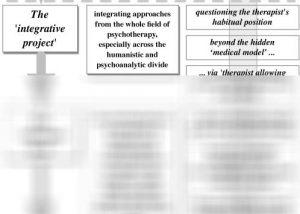
The Development of the Chiron Approach – Phases, Steps & Revisions (2005, simple)
Michael - Handouts2017-04-07T03:01:19+00:00This hand-out summarises all the graphics (plus a few more) which I put together for my chapter of the same title for the book ""Contemporary Body Psychotherapy - the Chiron Approach"" (edited by Linda Hartley), in which I charted my development over 25 years of studying, working and [...]
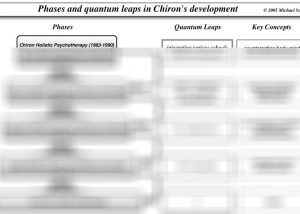
The Development of the Chiron Approach – Phases and Quantum Leaps (2005)
Michael - Handouts2017-04-07T03:01:08+00:00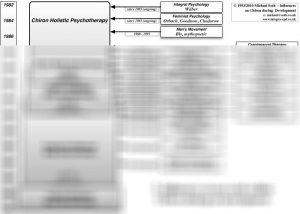
Influences on my Work within Chiron during its Development (2005, detailed)
Michael - Handouts2017-04-07T03:00:59+00:00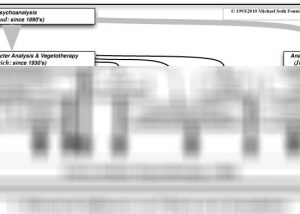
Influences on Chiron at its Foundation (2005)
Michael - Handouts2017-04-07T03:00:51+00:00This handout summarises the main influences on the Chiron approach at its inception in the early 1980s, when it started off under the title Holistic Psychotherapy. Chiron involved out of Biodynamic Psychology, and integrated all the main schools of Neo-Reichian psychotherapy, as they were known at the time, [...]
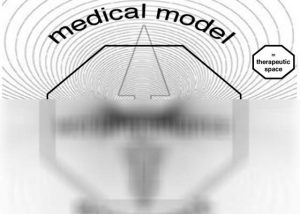
The Diamond Model of Modalities – The force field between medical model, working alliance, enactment (2004)
Michael - Handouts2017-04-07T03:00:46+00:00This handout presents the underlying force field and fundamental tension which the therapeutic endeavour operates within. Historically, and in the public (mis-)perception, therapy is seen as equivalent with 'medical model' treatment, i.e. symptom reduction through the therapist operating as a 'doctor for the feelings' (or the mind/mental states, [...]
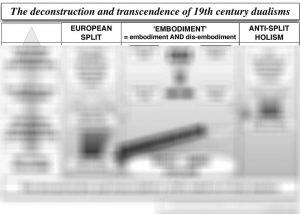
The Deconstruction and Transcendence of the BodyMind Dualism (2014)
Michael - Handouts2017-04-07T03:00:38+00:00This handout, adapted from and similar to The 'Birth Trauma' of Psychotherapy and the Deconstruction and Transcendence of 19th-century Dualisms (2004), spells out a little bit more the split between the 'talking therapy' approaches and the embodiment approaches, and their respective historical developments and one-sidednes.
To gain [...]
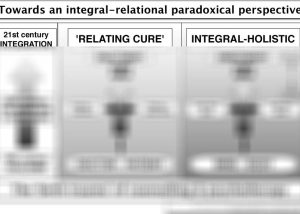
The ‘Birth Trauma’ of Psychotherapy and the Deconstruction and Transcendence of 19th-century Dualisms (2004)
Michael - Handouts2017-04-07T03:00:29+00:00This dense and abstract handout, consisting of several pages, summarises the evolution of the field of psychotherapy since its origins in Freud's zeitgeist of the late 19th century. I am picking out two main dualisms: the doctor-patient relationship and the mind-over-body relationship. The history of psychotherapy over the [...]
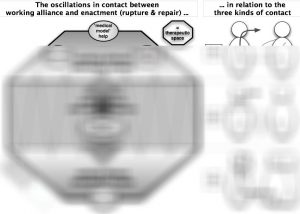
The Diamond Model of Modalities – Oscillations (2004)
Michael - Handouts2017-04-07T03:00:21+00:00My 'Diamond Model of the Modalities', based on Clarkson's modalities of the therapeutic relationship, uses my extended version of the modalities by including 'medical model'-relating. This model is designed to transform what are usually understood as sequential treatment options into it dynamic system in which all modalities are [...]
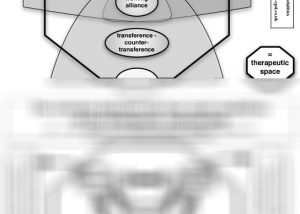
The Diamond Model of Modalities – Overlaps & Tensions (2004)
Michael - Handouts2017-04-07T03:00:13+00:00This handout summarises the dynamic system of the modalities of the therapeutic relationship, the hexagon representing the therapeutic frame, and all modalities having potentially therapeutic as well as countertherapeutic effects. to some extent the modalities overlap, but traditionally therapists have emphasised the tensions, and absolutised them into mutually [...]
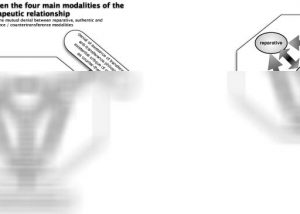
The Diamond Model of Modalities – Tensions (2004)
Michael - Handouts2017-04-07T02:59:59+00:00This handout summarises the dynamic system of the modalities of the therapeutic relationship, the hexagon representing the therapeutic frame, and all modalities having potentially therapeutic as well as countertherapeutic effects. to some extent the modalities overlap, but traditionally therapists have emphasised the tensions, and absolutised them into mutually [...]
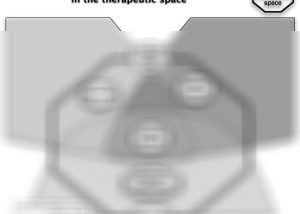
The Diamond Model of Modalities – Overlaps (2004)
Michael - Handouts2017-04-07T02:59:47+00:00This handout summarises the dynamic system of the modalities of the therapeutic relationship, the hexagon representing the therapeutic frame, and all modalities having potentially therapeutic as well as countertherapeutic effects. To some extent the modalities overlap, but traditionally therapists have emphasised the tensions, and absolutised them into mutually [...]
The Relational Turn – Moebius (2004)
Michael - Handouts2017-04-07T03:00:04+00:00I formulated the key insight which for me constitutes the 'relational turn' in two languages: one as relevant in ALL psychotherapeutic approaches, and one formulated in the language of Body Psychotherapy. Because it is such a crucial insight, I turned it into a fridge sticker, using the famous [...]
The Relational Turn (2003)
Michael - Handouts2017-04-07T02:59:31+00:00My formulation of what I call the 'relational turn' in two versions: 1. in the language of Body Psychotherapy (i.e. where I first discovered it); 2. in a generic formulation applicable to all kinds of therapeutic approaches. To my mind this formulation constitutes a watershed - a fundamental [...]
The Paradox of Enactment (2003)
Michael - Handouts2017-04-07T02:59:40+00:00The 'relational turn' is a paradigm shift into the paradoxical foundation of psychotherapy: having recognised that ""it's the relationship that matters"" in therapy, we then see that the working alliance - which holds this professional and apparently artificial and contrived relationship together - is inherently conflicted and paradoxical. [...]
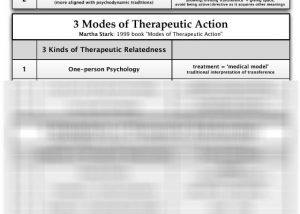
The Therapist’s Relational Stance (2003,2010,2015)
Michael - Handouts2017-04-07T02:59:35+00:00This handout is a summary of three useful and mutually complementary formulations/models, which help us understand the therapist's relational stance. A good starting point for naming and describing relational stances is Lavinia Gomez’s (2003) distinction between being ‘alongside’ the client (typically championed by humanistic approaches) versus relating [...]
The Conflicted Ego (2002)
Michael - Handouts2017-04-07T02:59:29+00:00Building on the formulation of 'the conflicted ego in conflict with a spontaneous conflict', as implied in the 5 parallel relationships (see 1998 handout), I started trying to put the various components that students were struggling with into one handout, and this was the result.
To gain access [...]
5 Parallel Relationships (2001)
Michael - Handouts2017-04-07T02:59:13+00:00This handout is a more complex elaboration of the previous one, based upon further distinguishing the internal object relations (i.e. the ways in which the client is relating to themselves, and the multiple self states involved) into three further parallels: 1. conflicting dynamics within the ego ( similar [...]

